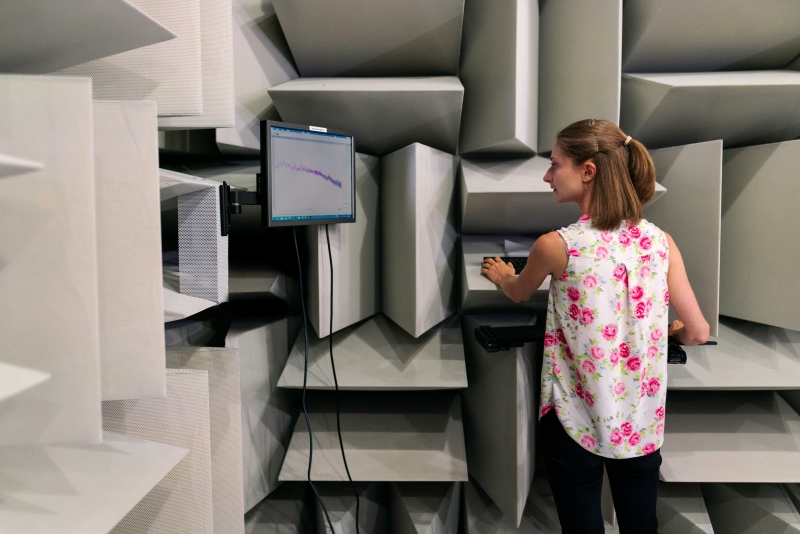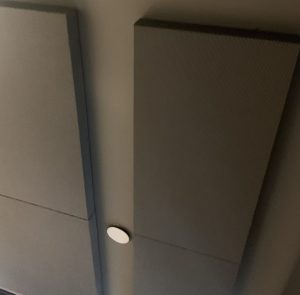Does Soundproofing Work Both Ways? Explained
We embark on soundproofing projects for a number of reasons. Sometimes we’re trying to keep neighborhood noise from disrupting our weekly movie night. Sometimes we want to host parties past quiet hours and don’t want to disturb the neighbors. While each of these circumstances illustrates a different driving force, they both illustrate the need for soundproofing. Many people immediately ask themselves, does soundproofing work both ways?
Is both way soundproofing possible?
It’s common for people who want to soundproof a space to ask whether or not both way soundproofing is possible. As long as you’re tackling one issue, you may as well design your solution to handle others, right? Luckily, when quality materials are employed properly, both way soundproofing is certainly attainable.
Proper soundproofing blocks sound from traversing barriers, no matter which side they originate from. But, when it comes to soundproofing materials working both ways, you’ve got to use the right materials and techniques to make that claim a reality. Let’s begin by digging into the basics.
How soundproofing works
The first thing you need to understand when soundproofing spaces is how exactly soundproofing works. There are basic pillars on which we defend against sound passage, and they are common amongst all projects. Once you understand how they function to block sounds, you’ll understand why they work both ways.
Decoupling surfaces
One of the most effective ways of stopping sound passage is through decoupling, which is a method of isolating walls from one another. The way we decouple surfaces is by removing direct pathways that allow vibrations to pass from one side to the other.
In a standard wall, 2 x 4 studs are sandwiched between layers of drywall or other wall board. When a vibration strikes the wall, those vibrations travel through the studs and into the board on the opposite side. This produces the muffled sound you hear from the side opposite the source of the sound. A decoupled wall looks different.
One of the most common ways we decouple walls is by adding a second set of studs that are offset from the first set. This removes the direct pathway those vibrations would otherwise use to traverse the surface. This basic principle is capable of stopping a tremendous amount of vibrational energy from passing through walls, ceilings, and floors, which makes it incredibly important in the world of soundproofing.
Adding mass and density
Mass and density are equally important components in any soundproofing project. For isolating sounds on one side or the other, we want to add both mass and density to our walls, ceilings, floors, and doors.
Walls
Most walls in homes are hollow. They carry pipes, wires, and ductwork. Filling them with acoustical insulation is a great start, but if you want to up your defenses against sound, you’ll want to add mass to the wall surfaces themselves.
One simple way to add significant stopping power to your walls is to roll mass loaded vinyl (MLV) onto them. This high density, flexible material is easily rolled onto flat surfaces to add mass and increase soundproofing ability. You can even do it yourself. Simply roll it on and tack it up.
You will want to be sure to cover it, however, as MLV should not be left exposed in your home or office. To increase the soundproofing ability even more, use an additional layer of drywall for this purpose. The structure must be able to handle the additional weight, so consult with a qualified professional if you have any questions.
By adding mass and density to your walls, you make it substantially more difficult for vibrations to traverse the structure. It doesn’t matter what side the additional mass is applied to. You will achieve both way soundproofing.
Doors
Doors are another item that deserves attention, as they are typically the weakest point in exterior walls. If you’ve got a hollow core door, it will provide very little protection. The heavier your door, the better it will function.
Heavy studio doors are your best option. They are built for their soundproofing abilities, and carry enough weight to stop even loud, booming sounds. That protection extends to both sides of the door, making heavy doors effective ways of achieving both way soundproofing.
Windows
Outdated windows can leak a lot of sound and make rooms less energy efficient than they would otherwise be. Vintage windows are often built with single panes and the seal at the edges have long since lost their ability to block sounds. New windows can solve the problem.
Windows perform best when they have multiple panes with a gap between them. Sound waves impact one pane, and the gap prevents vibrations from transferring to the next pane. This achieves both way soundproofing and also makes the home or office more energy efficient. If your budget doesn’t allow for a new set of windows, window inserts can help you achieve the same performance.
Window inserts are available in both standard and custom sizes, meaning you can add an additional pane and an air gap without sacrificing your old windows. This is a popular option for historic buildings or windows. When we want soundproof windows without changing the look of our vintage windows, they can be installed on the interior side to keep sound waves at bay.
Damping vibrations
Damping is another important concept in acoustic management and soundproofing. Sound is created by vibrational energy, and since energy can’t be destroyed, we have to convert it somehow. That’s where damping comes in. Sound damping is the process of converting vibrational energy into heat energy. We utilize a number of different products to achieve this.
One product that’s easy for DIY projects is green glue. It’s applied between surfaces, and does a fantastic job of converting that vibrational energy into heat energy. It’s typically applied between studs and drywall or between layers of drywall. As vibrational energy passes from one surface to the green glue, it’s converted to heat energy and the transfer stops there.
We’ve also got to take into account the fact that vibrations can resonate in any air gaps between the studs on the inside of the walls. As sound waves bounce back and forth off the interior cavities, they become louder. This interior noise can almost always be heard on the outside of the wall.
To combat this, you’ll want to add acoustical insulation. Standard insulation won’t work for this purpose. Acoustical insulation is composed of materials that damp sound waves, eliminating them from empty cavities that may otherwise reverberate endlessly. It also provides some thermal benefits, giving you the best of both worlds.
Sealing gaps
While we’re adding mass and density to the wall structure and doing everything we can to damp sound waves, it’s important to ensure there aren’t any gaps in the facade. As a general rule of thumb, if air or water can get through, so can sound. To eliminate this passageway, we must seal the gaps. If you’ve got serious cracks in your walls, it’s best to have a professional look at it to address safety concerns. The gaps we’re talking about are typically concentrated around the windows and doors.
Windows
If you have drafty windows, that’s a good sign that you have gaps present. To seal them, you’ll want to utilize acoustical caulk. Acoustical caulk is much more flexible than standard caulk, and will last a whole lot longer. That’s due to the material.
Traditional caulk is typically made of silicone, acrylic, or other materials that shrink and crack over time. This means you’ll have gateways for sound passage much sooner than you thought. Acoustic caulk, on the other hand, is made of latex, which remains permanently flexible. This enables it to create a two way sound stopping seal that will last for years.
Doors
Any gaps around the doors must also be sealed. Expanding foam gap filler behind the frame will create a seamless stretch from end to end, and can be incredibly helpful. Beyond that, you’ll have to take care of any gaps between the door and the frame.
Since the door must be able to open and close to operate, we can’t seal those gaps with caulk or foam. The most effective way to seal it up for both way soundproofing is with a door seal kit. These kits contain everything you need to seal gaps on all edges of the door. If it comes with an automatic door sweep, that’s even better.
Automatic door sweeps have a mechanism that forces them to open when the door opens, and close when the door closes. This way, you can get a complete seal without impeding the motion of the door or damaging the floor.
Absorbing sound waves
Acoustical treatment materials like acoustical panels and foam serve a very practical purpose in soundproofing. By reducing the volume of the noise we’re fighting, the easier it is to stop that noise. But do acoustic panels work both ways? Does soundproof foam work both ways?
Whether you’re trying to keep sound from escaping or entering, you can achieve more efficient both way soundproofing with the help of acoustical panels or foam.
The walls
The most common places we use sound absorption materials are the large, flat surfaces in the space. The walls contribute a large percentage of those surfaces, making them ideal locations for acoustical panels or foam.
When sound waves enter these types of soundproofing materials, whether from the front or back side, they are absorbed and converted into heat energy. Trapping these waves helps prevent echo and reverberation and keeps the overall volume down inside the space. Mounting these treatments to your walls also improves speech intelligibility and sound quality, so their benefits stretch far beyond that of simple soundproofing.
The ceiling
You can utilize the same types of acoustical treatments on the ceiling that you would the walls, but you have a little more room to stretch your creative muscles here. While these panels may be mounted directly to the ceiling in the same way we mount them to walls, they can also be suspended.
Suspending panels in the form of drop ceilings or ceiling clouds allows you to improve sound and block overhead sounds, but it also allows you to deliver awesome aesthetic effects. No matter your arrangement, they are effective ways of absorbing waves and contributing to both way soundproofing between stacked spaces.
Each of these principles will help reduce sound passage between the inside and outside of the room, but for superior both way soundproofing, you’ll get much better results by combining them. Each line of defense serves a very specific purpose, and their combination helps stop sound waves from every angle.


















Leave a reply
You must be logged in to post a comment.